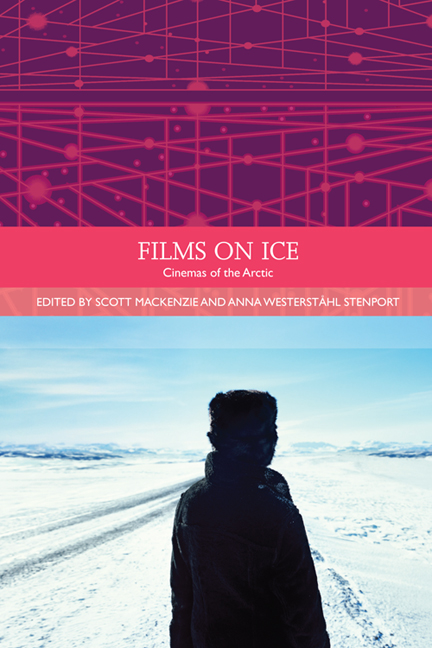Book contents
PART II - HOLLYWOOD HEGEMONY
Published online by Cambridge University Press: 05 September 2016
Summary
From the earliest days of cinema, the Arctic has played a central part in American and Hollywood cinematic imaginaries. Its oft-cited remoteness and exotic locale additionally exemplify Hollywood's long tradition of location substitution. However, as the chapters in this section demonstrate, the Arctic in Hollywood cinema mobilises diverse cultural, political, gendered, historical and aesthetic perspectives. For instance, Hollywood cinemas have used the environments and populations of the Arctic to make claims about capitalism, communism and proto-fascism. And even in the supposedly unknown Arctic, similar conventions of heteronormativity and patriarchy obtain, in this case replete with figurations of heroic and rugged explorers or noble indigenous hunters. In the chapter ‘Fact and Fiction in “Northerns” and “Early Arctic Films”’, Russell A. Potter situates burgeoning American feature film production as a continuum of pre-cinematic practices that presented the unknown Arctic, and its populations, through staged and recognisably fictional sets and exhibition modes. As these practices developed into narrative Hollywood silent cinema, the malleability of the Arctic region continued to be made evident through location substitution. Addressing location substitution in the comedies of Sennett, Keaton and Chaplin in the 1920s, Mark Sandberg, in his chapter ‘California's Yukon as Comic Space’, examines the ways in which Hollywood was able to build a simulacrum of the entire world on its backlots. In the case of the Arctic in particular, Sandberg delineates the claims for authenticity made by these films and the publicity machines that surrounded them, despite their artificiality. In ‘“See the Crashing Masses of White Death …”: Greenland, Germany, and the Sublime in the “Bergfilm” SOS Eisberg’, Lill-Ann Körber traces the history of this Hollywood-Germany co-production, considers it in relation to the rugged, purity-of-nature Bergfilm (‘mountain film’) genre and examines its proto-Nazi leanings. She also analyses Fanck's perhaps spurious claims about the authenticity of his representation of the Arctic, which were used as promotional material for the film. In her chapter ‘The Threat of the Thaw: The Cold War on the Screen’, Anna Westerstahl Stenport examines how the Arctic was figured as a porous sheet of ice separating the East and West blocs during the Cold War and held a privileged position in Hollywood filmmaking from the 1950s to the 1980s.
- Type
- Chapter
- Information
- Films on IceCinemas of the Arctic, pp. 117 - 120Publisher: Edinburgh University PressPrint publication year: 2014



